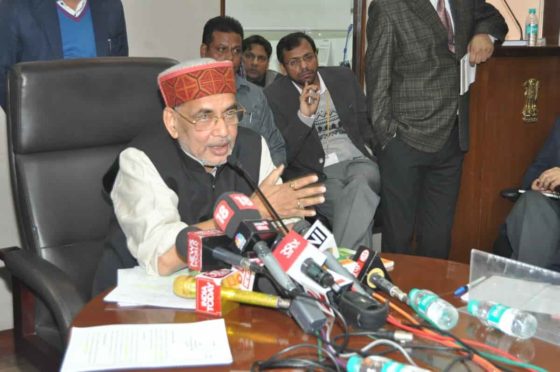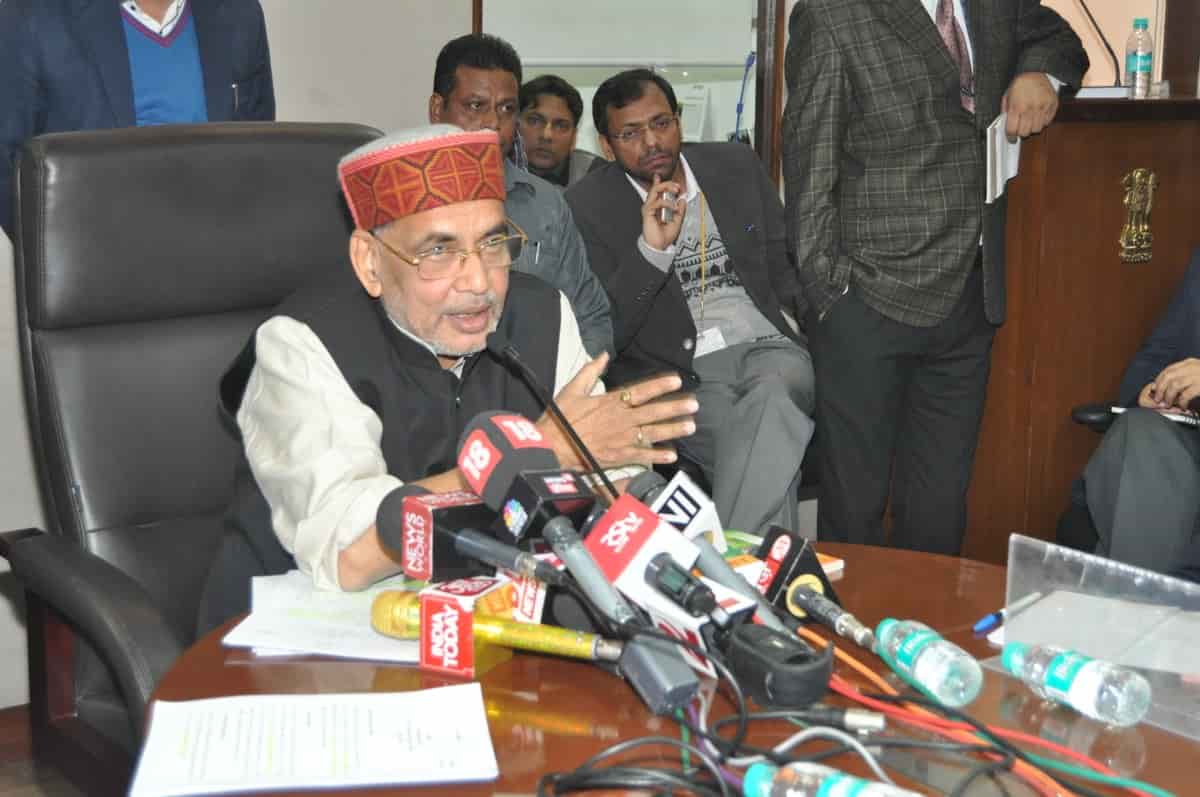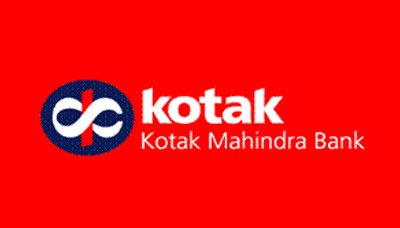New Delhi, 29 December 2016/Team Estrade//–
- PRADHAN MANTRI FASAL BIMA YOJANA:
About 309 lakh farmers of 23 states had been covered under Fasal Beema during previous Kharif Season 2015 in which 294 lakh farmers were lonee and 15 lakh farmers were non-lonee. During Kharif 2016, however, 366.64 lakh farmers have been covered out of which 264.04 lakh farmers are lonee and 102.60 lakh farmers are non-lonee. Pradhan Mantri Fasal Beema Yojana has been implemented by 21 states during Kharif 2016.
- SOIL HEALTH CARD SCHEME:
Against a target of 2.53 crore soil samples collection upto March 2017, 2.33 crore soil samples have been collected till 27.12.2016, from which 12.82 crore soil health cards are being made. Out of these, 4.31 crore soil health cards have printed and 4.25 crore soil health cards have been distributed to the farmers and remainings are under process. During 2016-17, 0.20 crore samples are to be collected from which 1.10 crore soil heath cards will be prepared. During 2014-17, 460 Soil Testing Laboratories have been sanctioned while during 2013-14 only 15 Soil Testing Laboratories were sanctioned. In addition to 460 Soil Testing Labs, 4000 mini labs have also been sanctioned to the States.
- PARAMPARAGAT KRISHI VIKAS YOJANA:
The scheme was started in 2014 to promote organic farming with an allocation of Rs. 597 crore for three years and a target to set up 10,000 clusters. Till December, 2016, State Governments have made 9186 clusters.

- NATIONAL AGRICULTURE MARKET (NAM):
Under this scheme, 250 mandis of 10 states have been integerated with e-NAM Portal. In principal approval has been to integrate 399 mandis with e NAM for which an amount of Rs. 93 crore has been released. As on 27.12.2016, 35,04,371.13 tonnes of agriculture produce worth Rs. 7,131.21 crore has been transacted on e-NAM platform. As on 27.12.2016, 9,49,112 Farmers, 59,742 Traders and 31,317 Commission Agents have been registered on the e-NAM platform.
- PRADHAN MANTRI KRISHI SINCHAYEE YOJANA(PMKSY):
During 2013-14, an area of 4.3 lakh hectare was covered under micro irrigation. Whereas, during 2014-16, an area of 12.74 lakh hectare has been brought under micro irrigation under Pradhan Mantri Krishi Sinchayee Yojana which is an increase of 200 %. PMKSY scheme is being implemented in mission mode with aim of completing 99 major and medium irrigation projects with the capacity of 76.03 lakh hectare in a phased manner by December, 2019 with command area development with an amount of Rs. 77,595 crore. During the year 2016-17, a sum of Rs. 12,517 crore will be incurred to implement 23 irrigation schemes under PMKSY Mission.
- DEVELOPMENT OF BEEKEEPING :
Honey production has increased from 1,48,450 MT during 2012-14 to 2,63,930 MT during 2014-16 which is an increase of 78 %. An amount of Rs. 7.15 crores released to National Bee Board (NBB) during last two years (2014-15 & 2015-16) in comparison to an amount of Rs. 5.94 crores released during last three years (2011-12 to 2013-14). An amount of Rs. 12.00 crores has been approved for National Bee Board (NBB) for the year 2016-17.
- FARMER PRODUCER ORGANIZATION (FPO):
568 FPOs have been registered during 2014-16 ( 2 Years) against 223 FPOs were registered during 2011-14 (3 years) which is an increase of 155 %.
- FINANCING OF JOINT LIABILITY GROUPS (JLGS):
Financing of 18.21 lakh Joint Liability Groups from 2014 to 2016 during just 2 ½ years as compared to 6.7 lakh JLGs during the 7 years from 2007 to 2014. In comparison to cumulative achievement of Rs. 6630 cr. During 7 years from 2007 to 2014, Rs. 18,005.79 cr. Were made available to JLGs during just 2 ½ years from 2014 and September, 2016.
- HORTICULTURE:
During last decade area under horticulture has increased about 2.7% per year and annual production has increased by 5.5%. In spite of two successive droughts during 2014-15 and 2015-16, the production of horticulture crops has increased.
- COCONUT DEVELOPMENT:
From the beginning of this financial year 2016-17, India has started exporting Coconut Oil to Malaysia, Indonesia and Sri Lanka from where coconut oil was being imported from these countries in previous years. India became first in coconut production and productivity in the world. Coconut area, production and productivity reached 1.97 million ha, 20.439 billion nuts and 10345 nuts per ha respectively. 33% increase found in replanting and area rejuvenation of Coconut Development Board (CDB) during the year 2014-16 as compared to 2011-14.
- STATE DISASTER RELIEF FUND:
For the years 2010-2015, a provision of Rs. 33580.93 crore was made for State Disaster Response Fund. The same has been increased to Rs. 61,220 crore for the period 2015-2020.
- NATIONAL DISASTER RELIEF FUND:
During 2010-14, States sought an assistance of Rs. 92044 cr. And were granted Rs. 12516 cr. Whereas during, 2014-16, States sought an assistance of Rs. 94787 cr. and were granted Rs. 24556 cr.
- NEEM COATED UREA:
In one year, Modi Government has made available 100% neem coated area in the country. Due to this diversion of unauthorized use of urea by Chemical Factories has been stopped. Now farmers are getting urea in adequate quantity. Besides this, the cost of production is being reduced by 10-15% with the use of neem coated urea. Productivity will also increase with the use of Neem Coated Urea.
- AGROFORESTRY:
For the first time, Sub-Mission on Agroforestry has been initiated which will accelerate the programme “Medh Par Ped”. In addition, trees would also be grown as strip and intermittent plantation on farm land along with crops/ cropping system and as block plantation in cultivable waste land. Implementation of the scheme only in the states having liberalized transit regulations for transport of timber and will be extended to other states as and when such relaxations are notified by them. So far, the scheme is being implemented in 8 states.
- Coordinated programme on Horticulture Assessment and Management using geo-Informatics (CHAMAN): The programme has the objective to develop and firm up methodology for estimation of area and production under horticulture crops using “Remote Sensing Technology” and “Sample Survey Methodology”.Launched during September, 2014; to be completed in 3 years.
- INITIATION OF MOBILE APP FOR FARMERS:
Following mobile apps have been launched for the welfare of farmers: Kisan Suvidha, PUSA Agriculture, Agri Market, Crop Insurance and Crop Cutting Experiment (CCE) which can be downloaded from google play store as well as from www.mkisan.gov.in
- NATIONAL FOOD SECURITY MISSION (NFSM) / STEPS TAKEN FOR PULSE PRODUCTION :
Ø Till 2013-14 only three crops were covered under National Food Security Mission namely – Rice, Wheat & Pulses. The coverage during Modi Government has been increased to seven crops namely – Rice, Wheat, Pulses, Jute, Sugarcane, Cotton & Coarse Cereals.
Ø Till the year 2013-14, 482 districts of 16 States were included in National Food Security Mission (NFSM). Now with the addition 8 North Eastern States, 3 Hilly States (Jammu & Kashmir, Himachal Pradesh and Uttarakhand), Goa and Kerala, the Mission covers all 638 districts of 29 States in the country.
Ø Out of the total allocation of Rs.1700 crores under NFSM for 2016-17, Rs.1,100 crore (central share) was allocated for pulses which amounts to more than 60% of total allocation.
Ø For expansion of cultivation of new kinds of seeds, Rs.7.85 lakhs mini-kits are being distributed to farmers free of cost in the year 2016-17, through State Governments.
Ø In the year 2016-17, demonstrations of new techniques for pulse production are being carried out in 31,000 hectares by 534 Agriculture Science Centers through ICAR & State Agriculture Universities and Rs.25.29 crores were allocated for this purpose.
Ø Seed Hubs are being created through ICAR, State Agriculture Universities and Krishi Vigyan Kendras (KVKs) for ensuring the availability of new kinds of seeds. For this purpose, Rs. 225.31 crore have been approved for establishment of 150 seed centers during 2016-17 to 2017-18, out of which Rs.131.74 crore is proposed for 2016-17. From these seed centers 1.50 lakh quintals of improved seeds will be ensured.
Ø The production target for pulses for the year 2016-17 is 20.75 million metric tonnes. The production of kharif pulses in 2016-17 is expected about 8.70 million tonnes (as per 1st Advance Estimates) against target of 7.25 million tonnes.
- RASHTRIYA GOKUL MISSION:
With a view to conserve and develop indigenous bovine breeds, Rashtriya Gokul Mission, a new initiative under National Programme for Bovine Breeding and Dairy Development has been launched for the first time in the country, with an allocation of Rs 500 crore. Under the Mission, 14 Gokul Grams are being established, 35 Bull Mother Farms modernized with investment of more funds and 3629 Bulls have been inducted for genetic upgradation. Since 2007-08 to 2013-14, a meagre amount of only Rs 45 crore was spent for the development of indigenous breeds. Whereas, the current Government has in only one and a half years, upto December 2015, has approved 35 projects from 27 States and has sanctioned Rs 582.09 crore. This amount has been increased by more than 13 times in the last two years. Two National Kamdhenu Breeding Centre, one in northern region-Madhya Pradesh and other in Southern region- Andhra Pradesh, are being established in the country with an allocation of Rs 50 crores.
- MILK PRODUCTION: In comparison with (2014-16) growth rate between (2012-14) is 11.7%. Annual Milk production has increased by 6.3 % during 2015-16.
- FOUR NEW SCHEMES FOR DAIRY SECTOR:
- a) PASHUDHAN SANJIVANI :
Ø An animal Wellness Programme; encompassing provision of Animal Health cards (‘Nakul Swasthya Patra’) along with UID identification of animals in milk and a National Data Base.
Ø Under the scheme 8.5 crore animals in milk will be identified using UID and their data will uploaded in the INAPH data base.
Ø This will play crucial role in control of spread of animal diseases. This will also lead to increase in trade of livestock and livestock products.
- b) ADVANCED BREEDING TECHNOLOGY:
Ø Assisted Reproductive Technique to improve availability of disease free female bovines through of sex sorted semen technology.
Ø Under the scheme 50 embryo transfer technology labs and In Vitro Fertilization labs care will be established.
Ø This will lead to exponential increase in milk production and productivity of animals in an exponential manner.
- c) NATIONAL BOVINE GENOMIC CENTER FOR INDIGENOUS BREEDS(NBGC-IB):
Ø In developed dairy countries genomic selection is used to increase milk production and productivity for attaining faster genetic gain.
Ø In order to increase milk production and productivity of indigenous cattle, a National Bovine Genomic Centre will be established in the country.
Ø By using genomic selection indigenous breeds can be made viable within few generations.
Ø This center will play crucial role in identification of disease free High genetic merit bulls.
- d) E-PASHUDHAN HAAT PORTAL:
Ø At present there is no authentic market for bovine germplasm in the form of semen, embryos, male & female calves; heifers and adult bovines. Farmers depend on middlemen for sale and purchase of quality germplasm.
Ø Breed wise information on availability of bovine germplasm is not available which is essential for promotion of indigenous bovine breeds.
Ø For the first time in the country under National Mission on Bovine Productivity E Pashudhan Haat portal has been developed. This portal will play important role in connecting breeders and farmers of indigenous breeds.
Ø Through this portal farmers will be aware about breed wise information on indigenous breeds. Farmers/breeders can sale animals of indigenous breeds through this portal. Information on all forms of germplasm has been uploaded on the portal. Immediately farmers can obtain benefits of the portal.
Ø This portal will give new dimensions to development and conservation of indigenous breeds as at present information on availability of germplasm of indigenous breeds is not available with the farmers.
Ø Through the portal there will be no involvement of middlemen in sale and purchase of animals. Portal for sale and purchase of germplasm in all the forms is not available even in developed dairy countries.
- FISH PRODUCTION: Fish production has increased from 186.12 lakh tonnes during 2012-14 to 209.59 tonnes during 2014-16 (an increase of Rs.12.61 %). The Annual growth rate of fish production during 2015-16 is 6.21%.
- EGG PRODUCTION: During the year 2015-16, 82,930 million eggs produced while during 2014-15, 78,484 million eggs were produced. Egg production is now increasing by 5.66% annually. In comparison to 2012-14 during 2014-16 egg production growth rate is 10.99 %. Annual egg production rate is 5 %. Per person availability of egg has reached 66.
- VETERINARY EDUCATION:
To ensure that the existing syllabus and standards for graduate veterinary education is aligned with globally accepted standards, wide-ranging amendments have been made in Minimum Standards for Veterinary Education Regulations, 2008. In addition to this, to meet the shortage of trained veterinary manpower, the number of veterinary colleges has increased from 36 to 46. Intake of students in various Veterinary Colleges was enhanced from 60 to upto 100 seats. Total number of seats has been increased to 1,334 from 914 in 17 Veterinary Colleges. The number of veterinary graduates has increased by one and half times. Similarly the seats in veterinary colleges have increased by one and half times. One and a half time increase in post graduate studies in veterinary education has been attained. Seats in veterinary colleges have been increased by one and a half time.
- INCREASE IN RECRUITMENT OF SCIENTISTS:
81 % recruitment in 2014-15 and 2015-16 in comparison to only 66% in 2013-14, accelerated recruitment process through open competition and increase in representation of women scientists.
- EMPIRICAL LEARNING UNITS:
Compared to 2007-13, the number of empirical learning units in agricultural colleges was 264 which have now been increased to 416 in just two years during 2014-16 which is almost 58 percent increase. Education budget has also been increased by 50% in the last two years (2014-15 & 2015-16).
- STRENGTHENING OF KVKS:
Efforts were made to strengthen the KVKs by enhancing the number of staff positions of KVKs from the existing strength of 16 to 22.
- ATTRACTING STUDENTS, YOUTH TOWARDS AGRICULTURE AND IMPROVING THE SCIENTISTS – FARMERS INTERFACE:
Ø Attracting and Retaining Youth in Agriculture (ARYA):
The ARYA project will attract and empower the Youth in Rural Areas to take up various Agri-enterprises in Agriculture, allied and service sector for sustainable income and gainful employment. The project is running in 25 districts of 25 States through KVKs.
Ø FARMER FIRST:
The Farmer FIRST aims at enriching Farmers –Scientist interface, technology assemblage, application and feedback, partnership and institutional building and content mobilization.It will provide a platform to farmers and scientists for creating linkages, capacity building, technology adaptation and application, on-site input management, feedback and institution building. The scientists from 100 ICAR Institutes/ Universities are proposed to work with one lakh farmers directly.
Ø STUDENT READY:
Introduction of Fellowship from 2016-17 @ Rs. 3,000 per month for all the students for a period of 6 months during Student Ready which was Rs. 1000 per month earlier. Components of this scheme are:
- Experiential Learning (EL)
- Rural Agriculture Work Experience (RAWE)
iii. In Plant Training /Industrial Attachment/Internship
- Skill Development Training
- Student Project
Ø Mera Gaon- Mera Gaurav programme has been initiated to effectively promote direct interface of scientists of ICAR Institutes and State Agricultural Universities with the farmers to hasten the lab to land process. For this, a group of four scientists each will adopt 5 villages. Thus, there will be nearly 5000 groups of scientists adopting 25000 villages. At present, agricultural scientists have started providing information on newer technologies to the farmers in 15000 villages.
- CLIMATE RESILIENT VARITIES (DROUGHT RESISTANT AND FLOOR TOLERANT)
During 2014 to 2016, 127 varieties of food grains, 70 of pulses, 58 of oilseeds and 37 of others (total 292 new varieties) have been developed.
- AGRICULTURE EDUCATION:
Ø Recognizing the enormous potential of North-East India, six new colleges were opened by Modi government under Central Agricultural University, Imphal. Due to this, the number of agricultural colleges in the Northeast region has increased by almost 85 percent in the last two years.
Ø Similarly, in the Bundelkhand region of Uttar Pradesh, 4 new colleges under Rani Lakshmi Bai Central Agricultural University, Jhansi and conversion of Central Agriculture University have been completed.
Ø To make agriculture graduation courses income oriented, Government has approved the 5th Dean’s Committee report recommendations of the committee. Dean’s Committee report will be implemented in this educational session i.e. 2016-17. Through this new curriculum all agriculture based graduation courses will be altered into the professional ones which will be conducive to earn their livelihood in future.
- SPECIAL INITIATIVES:
Ø Four new ICAR Awards in two years: ICAR Administrative award, Haldhar Organic Farmer Award, Pandit Deendayal Antyodaya Krishi Puruskar and Pandit Deendayal Rashtriya Krishi Vigyan Protsahan Puruskar.
Ø Pandit Deendayal Unnat Krishi Shiksha Yojana has been started in the year 2016 by way of 130 training programmes on organic farming/natural farming and cow based economy in 32 SAUs of the country.
Ø Rashtriya Krishi Shiksha Divas is being celebrated on 3rd December in remembrance of country’s first Agriculture Minister Dr. Rajendra Prasad.
Ø Jai Kisan-Jai Vigyan Week is being celebrated since the year 2015 across the entire country during 23rd to 29thDecember, on the occasion of birth anniversaries of Ch. Charan Singh and Shri Atal Bihari Vajpayee.
Ministry of Agriculture: 30 Months Progressive steps






